Today Current Affairs: 16th September 2021 for UPSC IAS exams, State PSC exams, SSC CGL, State SSC, RRB, Railways, Banking Exam & IBPS, etc
Table of Contents
Reservation In Promotion In Government Jobs To Scheduled Castes And Scheduled Tribes.:
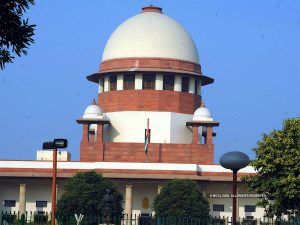
The Supreme Court said it was not ready to reopen a debate on its judgments granting reservation in promotion in government jobs to Scheduled Castes and Scheduled Tribes.
- It reiterated that it was up to the State governments to find ways and means of implementing the court’s June 2018 judgment on the issue.
- In a judgment in 2018, a Constitution Bench, led by then Chief Justice of India Dipak Misra, modified a 2006 judgment that required the State to show quantifiable data to prove the “backwardness” of a Scheduled Caste/Scheduled Tribe community in order to provide quota in promotion in public employment.
- The five-judge Bench judgment in the Jarnail Singh case in 2018 had given a huge fillip to the government’s efforts to provide “accelerated promotion with consequential seniority” for Scheduled Castes/ Scheduled Tribes (SC/ST) members in government services.
- Writing the verdict for the Constitution Bench three years ago, Justice Rohinton Nariman (now retired) had held that the requirement to have quantifiable data before granting reservation to SCs and STs was contrary to an earlier nine-judge Bench verdict in the Indra Sawhney case.
Project Udaan:
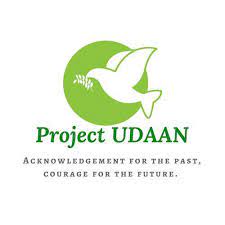
With an aim to break the language barrier that many students face when they join institutes of higher education, IIT-Bombay launched ‘Project Udaan’.
- It enables translation of textbooks and other study material related to engineering and other streams.
- Ganesh and his team have built an Artificial Intelligence-based translation ecosystem, which can help translate engineering textbooks and learning materials in one-sixth the time it would take for a team consisting of domain and linguistic experts working manually.
- Translation of text books in other educational domains will be taken up in due course.
Quad:
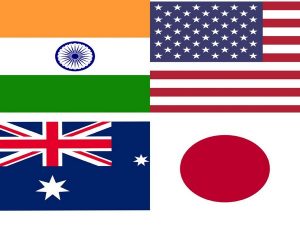
The White House announced that US President Joe Biden will be hosting the first in-person meeting of the Quad countries on September 24. Prime Minister Narendra Modi, Australian PM Scott Morrison and Japanese PM Yoshihide Suga will be present at the meeting.
- Following the Indian Ocean tsunami, India, Japan, Australia, and the US created an informal alliance to collaborate on disaster relief efforts. In 2007, then PM of Japan, Shinzo Abe, formalised the alliance, as the Quadrilateral Security Dialogue or the Quad.
- In 2017, faced again with the rising threat of China, the four countries revived the Quad, broadening its objectives and creating a mechanism that aimed to slowly establish a rules-based international order.
- In 2020, the trilateral India-US-Japan Malabar naval exercises expanded to include Australia, marking the first official grouping of the Quad since its resurgence in 2017 and the first joint military exercises among the four countries in over a decade.
- In March 2021, the Quad leaders met virtually and later released a joint statement titled ‘The Spirit of the Quad,’ which outlined the group’s approach and objectives.
BRICS Young Scientists Forum:
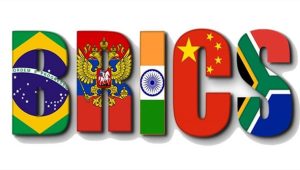
Dr Renu Swarup, Secretary Department of Science and Technology highlighted the importance of cooperation, collaboration and connections for science to move forward, at the BRICS Young Scientists Forum.
- The BRICS-YSF summits were first hosted by India in 2016, followed by China in 2017, South Africa in 2018, Brazil in 2019, and Russia in 2020.
- This year the four-day conclave started on 13 September 2021 would end on 16 September.
- The best young scientist with an idea on innovation would be awarded at the BRICS-YSF 2021.
- Young innovator prize has been one of the focuses of the BRICS-YSF and the award is supported by the DST, Government of India. The next conclave would be organized by China in 2022.
Hindi Diwas:

Hindi Diwas was celebrated across the country on September 14, 2021.
- It was on this day in 1949 that the constituent assembly adopted Hindi written in Devanagari as the official language of the country.
- It is one of the 22 scheduled languages of the Republic of India.
- It is celebrated across schools and colleges as well as offices. On the day, students are encouraged to participate in various events including essay and letter-writing along with language competitions.
- It is also on this day that the President of the country felicitates people for their contribution to Hindi language and literature.
- In India alone, there are roughly about 43.6 per cent speakers, who identify Hindi as their mother tongue — according to the 2011 census.
- The language has other variants as well, like Awadhi, Braj and Khadi Boli.
Raja Mahendra Pratap Singh:
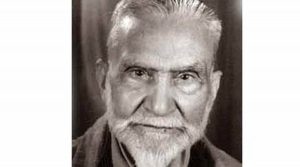
Prime Minister Narendra Modi recently laid the foundation stone for Raja Mahendra Pratap Singh State University in Aligarh.
- It will provide affiliation to 395 colleges of the Aligarh division.
- Raja Mahendra Pratap Singh Born in a royal family on December 1, 1886 in Hathras, Raja Mahendra Pratap Singh was a freedom fighter, social reformer and a figure representing the Jat community, predominant in Western Uttar Pradesh.
- In 1914, during World War I, Mahendra Pratap left India and led the German-backed first Provisional Government of India in Kabul, Afghanistan and declared himself its President while waging a war against colonial rule.
- It was around this time (1917) that Mahendra Pratap was received by Lenin and Leon Trotsky in Petrograd, in Russia.
- The British announced a bounty on his head and he fled to Japan to continue his movement.
- In 1911-12, he went off to fight in the looming Balkan War in Turkey, on the side of the Ottoman empire, along with fellow students from the Mohammedan Anglo Oriental College (MAO)
- In 1932, he was nominated for the Nobel Peace Prize.
- Established Prem Maha Vidyalaya, a polytechnic college, in Vrindavan, which offered various courses, including carpentry, pottery and textiles under one roof.
- He gave his own residence to establish the first technical school of the country.
- He founded the world federation.
Hydrogen Fuel:
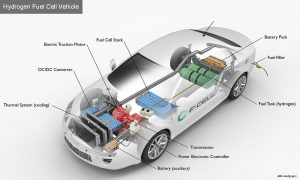
Ministry of Railways has decided to close down the Indian Railways Organization for Alternate Fuels with effect from September 7, 2021.
- The closure comes nearly a month after the IROAF had floated a tender for “hydrogen fuel cell-based technology” for retrofitting the existing Diesel Electric Multiple Unit (DEMU).
- All work-related to hydrogen fuel cells, including their tenders, will now be transferred to the Northern Railways.
- Indian Railways are set to run trains on hydrogen fuel based technology under ‘Mission Net Zero Carbon Emission Railway’ by 2030.
- Hydrogen is the lightest and first element on the periodic table. Since the weight of hydrogen is less than air, it rises in the atmosphere and is therefore rarely found in its pure form, H2.
- At standard temperature and pressure, hydrogen is a nontoxic, nonmetallic, odorless, tasteless, colorless, and highly combustible diatomic gas.
- Molecular hydrogen is not available on Earth in convenient natural reservoirs.
- Most hydrogen on Earth is bonded to oxygen in water and to carbon in live or dead and/or fossilized biomass. It can be created by splitting water into hydrogen and oxygen.
- Due to its ability to power fuel cells in zero-emission electric vehicles, its potential for domestic production, and the fuel cell’s potential for high efficiency hydrogen is considered an alternative.
- Water is the only by-product that results from the usage of hydrogen fuel that makes the fuel 100 per cent clean.
- Hydrogen can also serve as fuel for internal combustion engines.
- The energy in 2.2 pounds (1 kilogram) of hydrogen gas contains about the same as the energy in 1 gallon (6.2 pounds, 2.8 kilograms) of gasoline.
- The Finance Minister in the Union budget for 2020-21 formally announced the National Hydrogen Mission which aims for generation of hydrogen from green power resources.
- The Ministry of New and Renewable Energy (MNRE) has also disclosed that the draft regulations for NHM will be finalised by the end of this month and will thereafter proceed for approval of the Union Cabinet.
What Is Green Hydrogen?
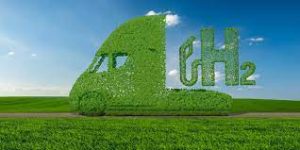
Power and New and Renewable Energy Minister RK Singh has urged US companies to participate in the bids for green hydrogen and electrolysers in the upcoming months.
- The path for green hydrogen in the country is not clear and at the moment, production of green hydrogen is slightly more expensive than grey hydrogen.
- Green hydrogen: Hydrogen when produced by electrolysis using renewable energy is known as Green Hydrogen which has no carbon footprint.
- Green hydrogen energy is vital for India to meet its Nationally Determined Contribution (INDC) Targets and ensure regional and national energy security, access and availability.
- Green Hydrogen can act as an energy storage option, which would be essential to meet intermittencies (of renewable energy) in the future.
- In terms of mobility, for long distance mobilisations for either urban freight movement within cities and states or for passengers, Green Hydrogen can be used in railways, large ships, buses or trucks, etc.
Applications of green hydrogen:
- Green Chemicals like ammonia and methanol can directly be utilized in existing applications like fertilizers, mobility, power, chemicals, shipping etc.
- Green Hydrogen blending up to 10% may be adopted in CGD networks to gain widespread acceptance.
Digital Agriculture:
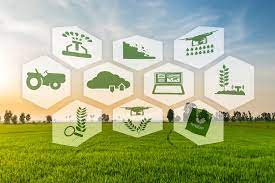
The Agriculture Ministry signed agreements with Reliance’s Jio Platforms, ITC, Cisco, NCDEX e-Markets and Ninjacart to develop agritech solutions using its National Farmers Database, which includes information of 5.5 crore farmers.
- This is part of an effort to modernise the agriculture sector by infusing new technologies so that farmers can increase their income, Agriculture Minister Narendra Singh Tomar said.
- The pilot projects including one to monitor soil conditions and another to help on post harvest linkages are part of the Digital Agriculture Mission and will draw on the National Farmers Database.
- The Centre has asked States to attach land records to the database, to grow it to 8 crore farmers.
- National Commodity & Derivatives Exchange Limited (NCDEX) is an Indian online commodity and derivative exchange based in Mumbai.
- It is under the ownership of Ministry of Finance , Government of India.
Engineer’s Day:
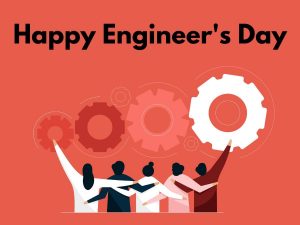
Every year on 15th September, India along with Sri Lanka and Tanzania celebrate National Engineer’s day to recognise and honour the achievements of the great engineer Mokshagundam Visvesvaraya.
- The day is observed to commemorate the great work of engineers and to encourage them for improvement and innovation.
- It is different from the World Engineers’ Day celebrated annually by UNESCO on 4th March.
About Mokshagundam Visvesvaraya:
- Born in Karnataka in 1861, he studied Bachelor of Arts (BA) from the University of Mysore and then studied civil engineering from the College of Science in Pune and went on to become one of the most eminent engineers in the country.
- He was an engineering pioneer of India whose genius reflected in harnessing of water resources and building and consolidation of dams across the country.
- His work was becoming so popular that the Government of India sent him to Aden (Yemen) to study water supply and drainage systems in 1906-07.
- He designed a project based on his study which was implemented in Aden.
- He served as the Chief Engineer of Mysore State in 1909 and as the Diwan of the princely state of Mysore in 1912, a position he held for seven years.
- As the Diwan, he made an immense contribution towards the overall development of the state.
- He was knighted as a Knight Commander of the British Indian Empire by King George V for his contributions to the public good in 1915.
- He was an Engineer who had planned the Indian Economy in 1934.
- He was awarded an Honorary Membership of London Institution of Civil Engineers for an unbroken 50 years.
- He was conferred India’s highest honour, the Bharat Ratna in 1955.
- He died in 1962 in Bengaluru, Karnataka.
Connect Karo 2021:
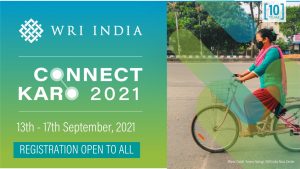
The Union Home Minister addressed the ‘Connect Karo 2021’ – Towards Equitable, Sustainable Indian Cities’ Event.
- It is part of a global series of events that World Resources Institute (WRI) India organizes and hosts, to bring together Indian and global leaders, and other stakeholders committed towards designing inclusive, sustainable and climate forward Indian cities.
- WRI India is an independent charity, legally registered as the India Resources Trust.
- Connect Karo sees presenters from various fields — air pollution, electric mobility, urban planning, urban water resilience, climate mitigation, and public transit among others — sharing their insights and research findings.
- By 2030, almost 70% of the national Gross Domestic Product (GDP) will come from cities as rapid urbanisation facilitates efficiencies of agglomerations.
- The best-performing cities globally contribute five times more to national GDP than comparable Indian cities.
- By 2030, the urban population in India will almost double to 630 million and to facilitate this level of growth it is needed to upgrade the urban infrastructure considerably and the impact of Covid-19 on our cities has made this even more significant.
- As the recent Intergovernmental Panel on Climate Change (IPCC) report suggests, cities are the major contributors as well as worst affected from climate change, hence, cities will be the battlegrounds for the fight against climate change.
- Even Sustainable Development Goals (SDG) 11 includes investment in public transport, creating green public spaces, and improving urban planning and management in participatory and inclusive ways
Index Of Industrial Production:

India’s industrial output grew by 11.5% in July compared to a 10.5% contraction a year ago, as per quick estimates from the National Statistical Office (NSO).
- Mining, manufacturing and electricity recorded growth of 19.5%, 10.5% and 11.1%, respectively, albeit driven by favourable base effect.
- The country’s output of the eight core sectors – also known as the infrastructural output, grew 9.4% in July 2021.
- The index substantially bridged the gap with the pre-pandemic level and remained only marginally lower than the July 2019 mark, suggesting a graded pick-up in industrial activities with the easing of curbs in key states as the Second Covid Wave waned.
- This recovery is owing to the result of the Base Effect due to the Covid-19 lockdown that affected economic activity in 2020.
- The base effect refers to the effect that the choice of a basis of comparison or reference can have on the result of the comparison between data points.
Index of Industrial Production:
- IIP is an indicator that measures the changes in the volume of production of industrial products during a given period.
- It is compiled and published monthly by the National Statistical Office (NSO), Ministry of Statistics and Programme Implementation.
- It is a composite indicator that measures the growth rate of industry groups classified under:
- Broad sectors, namely, Mining, Manufacturing, and Electricity.
- Use-based sectors, namely Basic Goods, Capital Goods, and Intermediate Goods.
- Base Year for IIP is 2011-2012.




